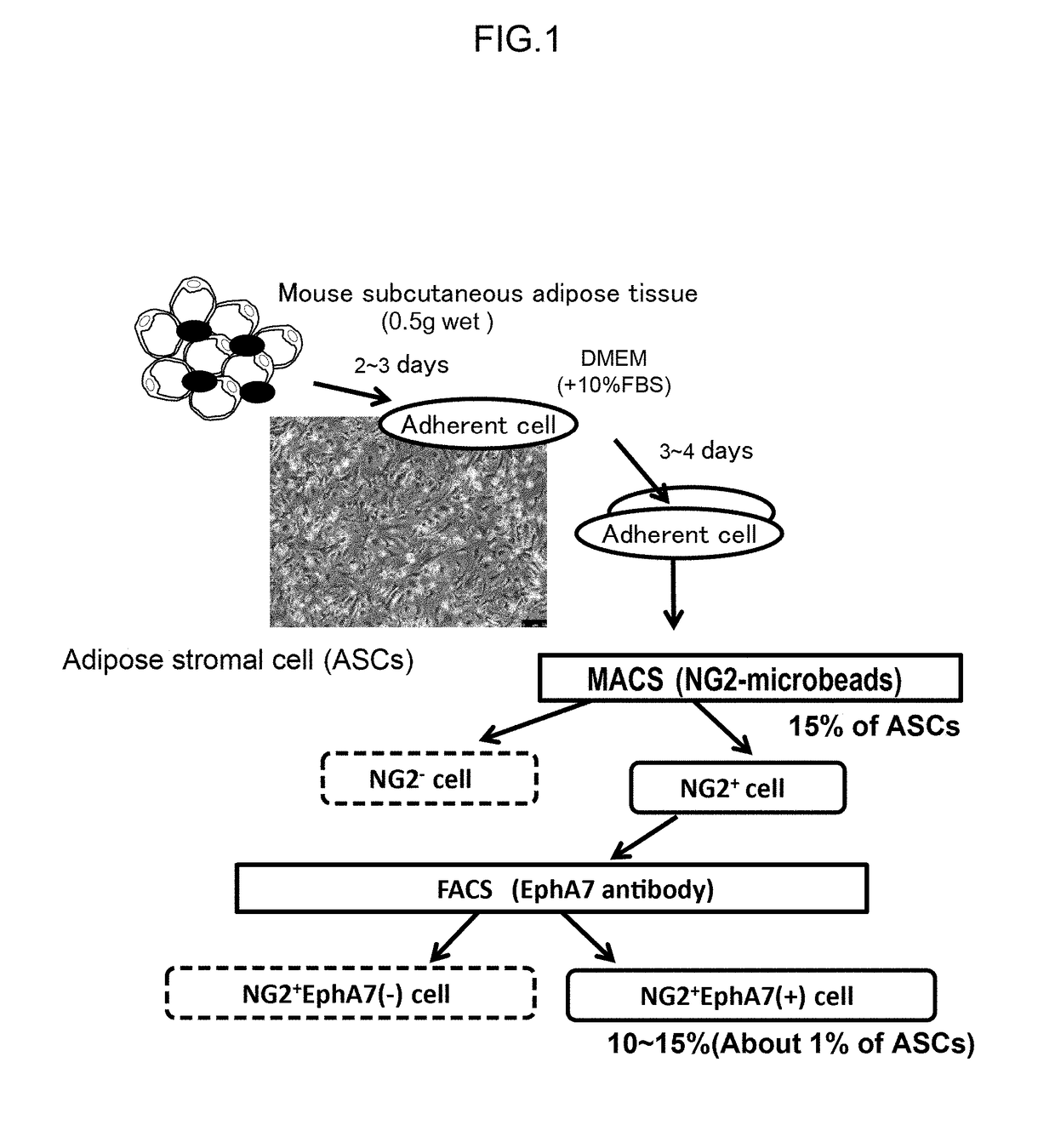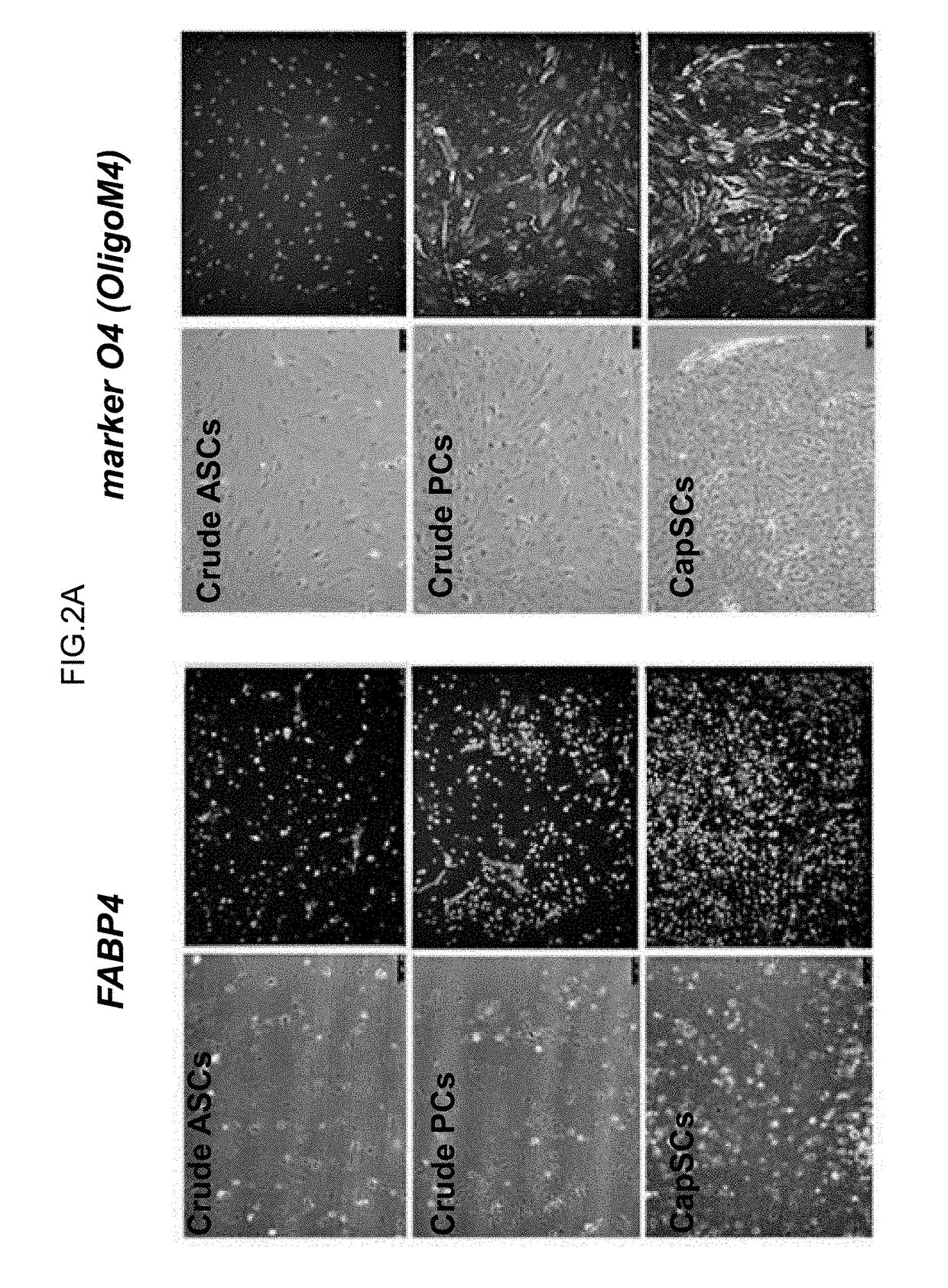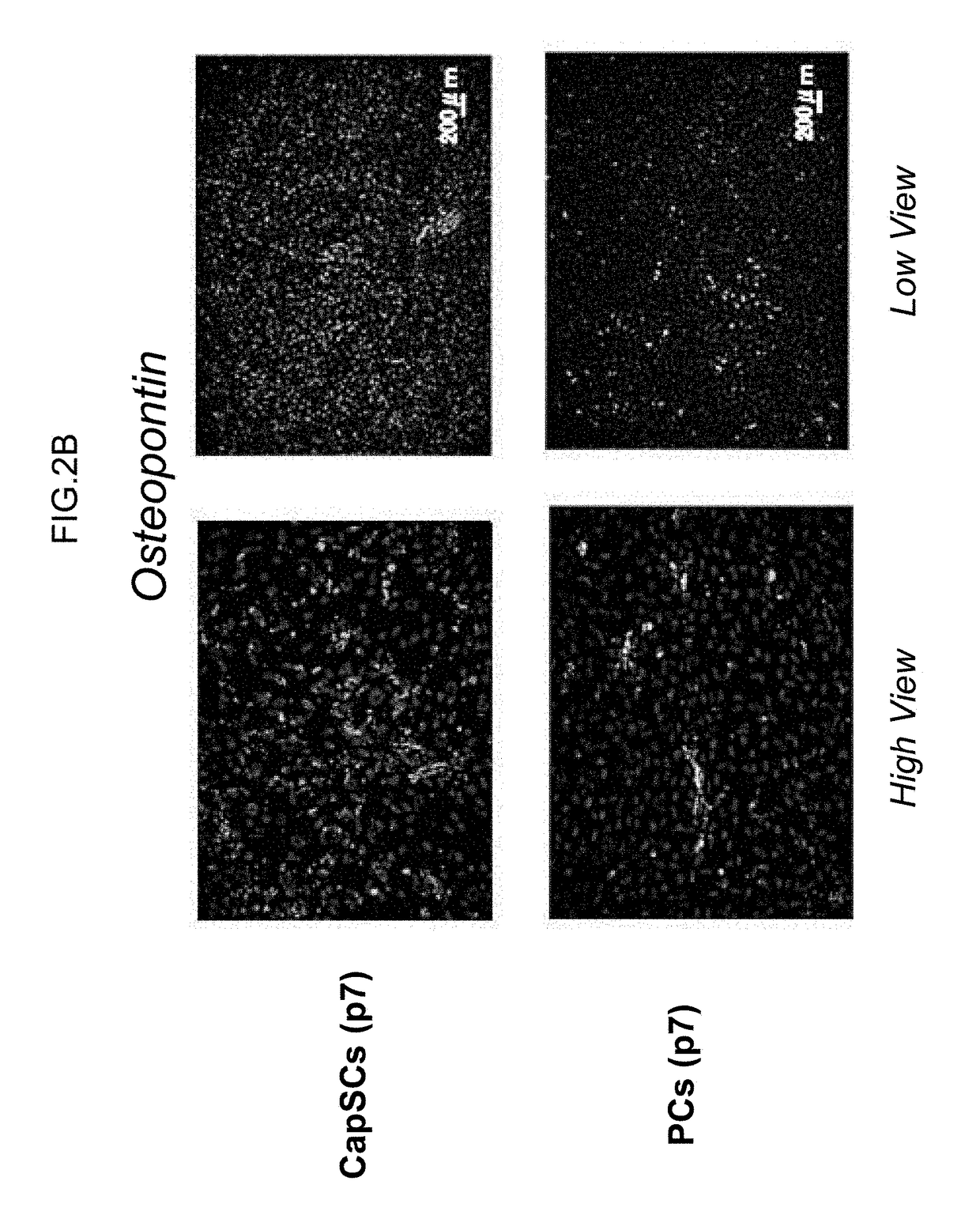Capillary vessel-derived stem cells, use of the same, and, method for producing the same
a technology of stem cells and capillaries, applied in the field of human-derived mesenchymal stem celllike cell population, can solve the problems that the method of separating multipotent pericytes as living cells from not only human tissues, but also experimental animal tissues has not been established, and achieves low risk of ethical problems or rejections, high vasculogenesisregenerative effect, and low risk of malignant transformation
- Summary
- Abstract
- Description
- Claims
- Application Information
AI Technical Summary
Benefits of technology
Problems solved by technology
Method used
Image
Examples
example 1
[0082]3 types of cell lines (CapSCs #7 (high degree of differentiation), CapSCs #9 (low degree of differentiation), CapSCs #3 (intermediate)) differing in the degree of differentiation potency were selected from 10 lineages of clone pericyte cell lines derived from peripheral tissue capillaries (see WO2013 / 118786), which had been established from a temperature-sensitive SV40T antigen-expressing mouse. Comprehensive array comparative analysis was conducted for expressed genes using an RNA expression array (Toray Industries, Inc. 3D-Gene array).
[0083]First, gene clusters that had exerted fluctuations in RNA expression level in order of #7-3-9 were extracted. Subsequently, 850 factors, each exerting the rate of change 1.5 or more times the threshold were extracted. The factors were narrowed down to 125 candidate factors in consideration of the results of cluster analysis (gene homology, gene functions and intracellular localization) based on Gene Ontology (GO) ...
example 3
n and Analysis of Human CapSCs
1. Separation of Human CapSCs Using Specific Cell Marker (FIG. 5)
[0099]Human neuroblastoma (1 month-old, female)-derived subcutaneous adipose tissue (0.3 g wet) was treated with collagenase I / II and Accumax, so as to isolate cells, and then the cells were subcultured for 2 passages using DMEM containing 10% FBS. Adherent cells (adipose stromal cells: hAPCs) were collected by trypsin treatment.
[0100]NG2-positive cells were separated from the collected cells by magnetic cell sorting (MACS) using microbeads on which an anti-NG2 antibody had been immobilized. Furthermore, EphA7-positive cells were separated from NG2-positive cells by flow cytometry (FACS) using an anti-EphA7 antibody. Finally, NG2-positive EphA7-positive cells accounting for 10% to 15% of adipose stromal cells were obtained. FIG. 5 shows the steps for preparation of cells.
2. Differentiation Potency of Human CapSCs (FIG. 6)
(1) Fat Cell Differentiation Potency
[0101]The above-prepared NG2-posi...
example 4
Improvement-Tissue Regenerative Capacity of Mouse CapSCs in Severe Hind Limb Ischemia Model
[0107]A hind limb ischemia model was produced using 12-week-old, male Balb / c nude mice through left femoral arteriovenous ligation⋅extraction, and 3 days later in each group (n=8), 1×104 mouse CapSCs were locally injected into 5 locations of an ischemic limb. After surgery, lower limb blood flow was evaluated over time (1 to 28 days) by laser Doppler (improvement in ischemic limbs / healthy lateral limb ratio immediately after treatment). Moreover, NG2-positive EphA7-negative cells, and a group to which physiological saline for cell suspension (control) had been administered were similarly evaluated.
[0108]Photographs of ischemic limbs 2 weeks later and Doppler measurements thereof (FIG. 10A), and the result of comparing the resting skin blood flow (% RBF) among 3 groups (FIG. 10B) are shown. The CapSCs-administered group was confirmed to exert significant tissue regeneration and significant reco...
PUM
| Property | Measurement | Unit |
|---|---|---|
| temperature | aaaaa | aaaaa |
| structures | aaaaa | aaaaa |
| permeability | aaaaa | aaaaa |
Abstract
Description
Claims
Application Information
 Login to View More
Login to View More - R&D
- Intellectual Property
- Life Sciences
- Materials
- Tech Scout
- Unparalleled Data Quality
- Higher Quality Content
- 60% Fewer Hallucinations
Browse by: Latest US Patents, China's latest patents, Technical Efficacy Thesaurus, Application Domain, Technology Topic, Popular Technical Reports.
© 2025 PatSnap. All rights reserved.Legal|Privacy policy|Modern Slavery Act Transparency Statement|Sitemap|About US| Contact US: help@patsnap.com



